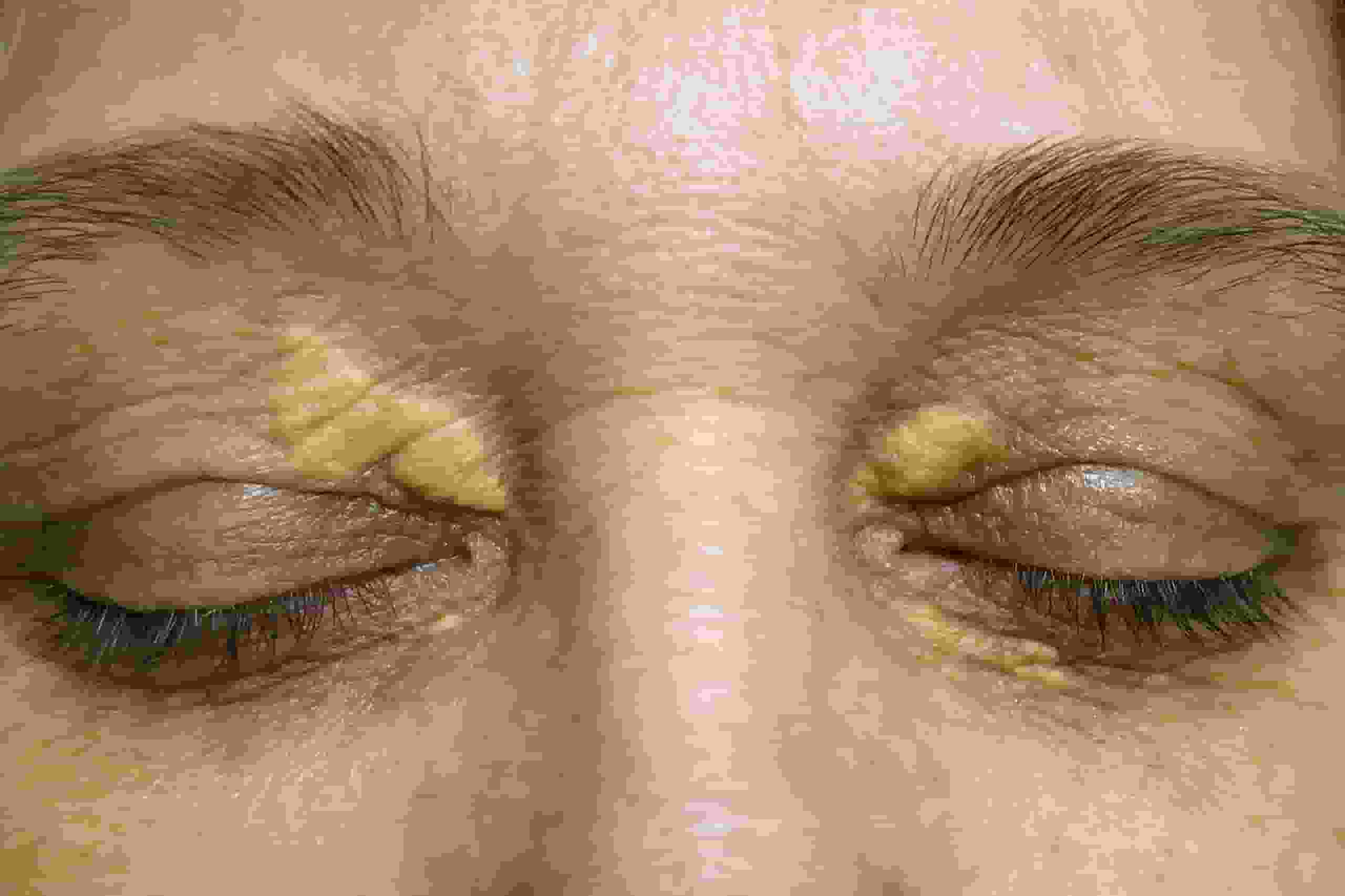
Fatty liver disease is a degenerative disorder that eventually results in liver scarring. The symptoms, which are frequently absent at the start, intensify with each stage of the disease.
Cutaneous consequences, such as xanthelasmas, are common in the later stages of fatty liver disease. According to the Annals of Hepatology, “Xanthelasmas are collections of lipid-laden histiocytes deposits in the upper and lower eyelids.”
Early Warning Indication
There is a strong link between primary biliary cirrhosis and hypercholesterolemia, which may explain why these patients are prone to developing both xanthelasmas and cutaneous xanthomas.
Xanthoma is a medical term that describes yellow growths that typically create an arc in the inner corners of the upper and lower eyelids.
They frequently serve as an early warning indication in medical settings that cholesterol has begun to build up inside the blood vessels.
According to the Journal of Inflammatory Research, up to 67.9% of individuals with cutaneous xanthomas have blood lipid problems.
Read more: Warning: Anyone who brews a cup of tea at work is at risk of spreading ‘dangerous’ microbes
Cholesterol In The Blood

Whereas xanthelasmas are most commonly associated with the level of cholesterol in the bloodstream, there is growing evidence linking them to heart and liver function.
The Journal of Inflammation Research reported in 2021 that fatty liver disease and atherosclerosis have similar risk factors. This prompted researchers to study if xanthelasma patients were also at risk of non-alcoholic fatty liver disease.
The researchers discovered that patients with more severe forms of non-alcoholic fatty liver disease had higher xanthelasma scores than those who did not have the disorder.
The scientists also noted that the illness is more common in women than in men, often affecting people between the ages of 40 and 50. According to WebMD, the majority of the cholesterol we consume ends up in our liver.
The NHS warns that it might take years before the liver starts scarring, so it’s never too late to start adopting lifestyle changes.
Even if a person does not lose weight, regular exercise and reducing fatty food intake can help improve non-alcoholic fatty liver disease.
Read more: Social Security: Who could get $914 payments this March 25?

